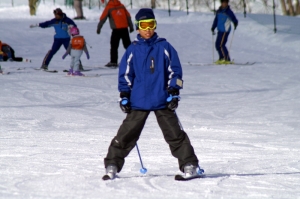
Administrator
NOASC Company Profile
Mission Statement
"Our mission is to strive for excellence in all fields and ventures".We are one the largest outdoor adventure sports company operating on the northern most Island of Japan, Hokkaido, specializing in a wide range of both summer and winter adventure sports activities.
Our operations include three locations : Niseko (our head office) located close to the west coast , Shimukappu (Furano/Tomamu) located in central Hokkaido near to Hokkaido’s largest National Park area and Akan located on the east coast of Hokkaido.
Our adventure activities/tours include Rafting, Mountain biking, Hiking, Ducky (Inflatable Kayaking), Kayaking, Raft Fishing, Family Rafting, Mountain Biking, Mountain Boarding, Hiking, Eco Walking, Spot lighting, Abseiling/Rappelling, Bridge Swinging, in summer.
During the winter our tours and activities include ski/snowboard/telemark lessons, Powder lessons, Kid's lessons, Private ski/snowboard lessons, Backcountry tours, Powder Tours, Snowshoeing, CAT Skiing, Ski Area Guiding, Tobogganing (snow sleding), Winter Rafting, and much more.
Our tours and activities cater for participants of all ages : young to old, beginners to seasoned adventure enthusiasts, individuals to large groups.
Pick Your Destination!
 The Last Minute offers are in Hot Scroller module. Beside several custom modules with interesting locations and lists of the places to visit, the template also includes Hot Maps module that shows Google maps of selected location.
The Last Minute offers are in Hot Scroller module. Beside several custom modules with interesting locations and lists of the places to visit, the template also includes Hot Maps module that shows Google maps of selected location.
Limited activity start Niseko and Shimukappu.. [Tomamu] in summer

Hokkaido has finally become hot, too.
The outside play is a comfortable highest coming at the season.
Let's play in the river,on the mountain so that there is no regret because it is short summer completely.
It is kids rafting in the family to the memories making during summer vacation.
It is everyone and making noise with the friend a canyoning.
Of course, standard Rafting and Ducky are recommended.
It is possible to camp as it is with the base.
It leaves for the exploration by the spotlight tour at night.
Niseko Kids Private Lessons
Kids Private Ski/Snowboard Lessons
Get the most out of your Niseko Ski/Snowboarding Holiday with some help from NOASC's instructors looking after your kids with a half-day 4hr, 6hr ski/snowboard lessons. Our instructors are well trained in taking care of your kids, teaching them how to ski/snowboard, while most importantly keeping it all fun, and games.



.jpg)

